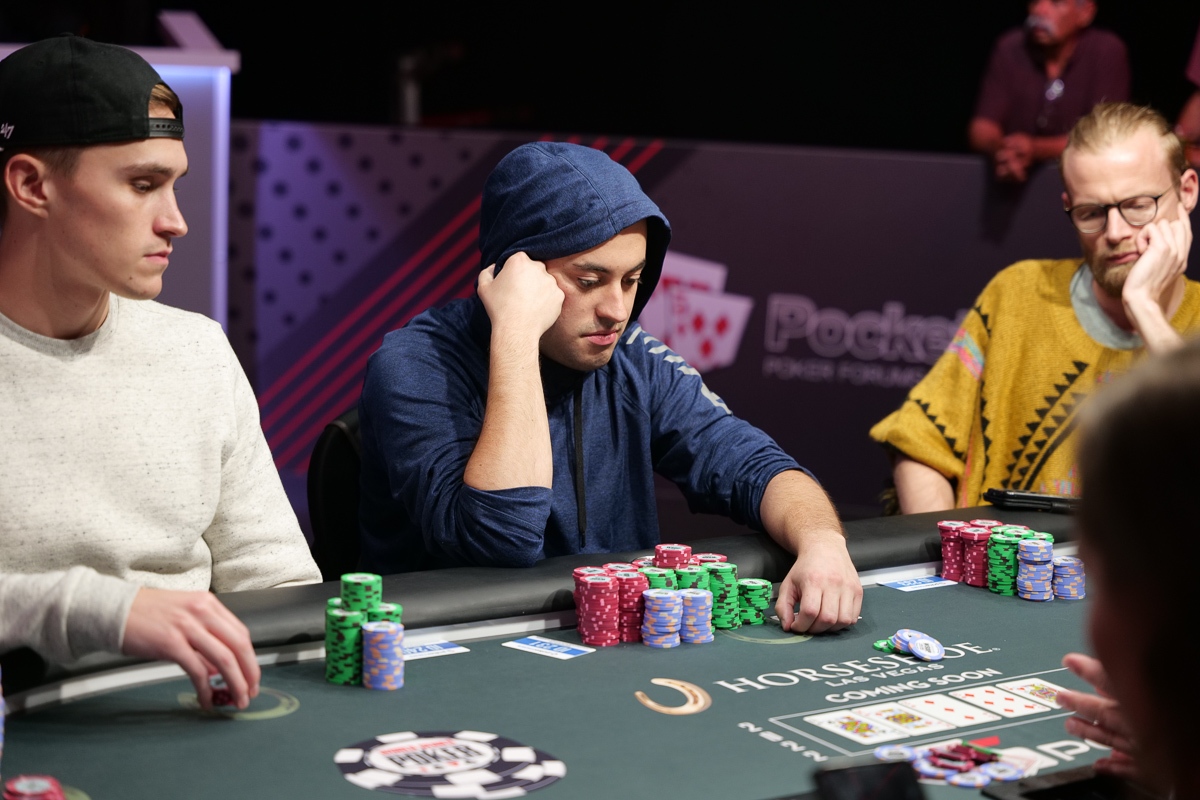Get your mind out of the bedroom. I’m talking about three-way situations in poker.

Poker players tend to think in terms of heads-up competitions. We think of our odds of beating out single opponents. An overpair vs. suited connectors is roughly a 4:1 favorite. AK suited vs an underpair is roughly even odds. AK vs AA is worse than a 2:1 underdog. Etcetera.
But even the most serious poker player will probably pause if you ask what the odds are on his J♥ T♥ against both AA and 99. Similarly, many become unsure what the right strategy is on the flop with four opponents, when you’ve hit top pair and a reasonable kicker, and you’re thinking you’re against a couple of drawing hands and a couple of pairs.
Are you looking to shrink the field and get everyone to fold, or are you hoping to get many callers?
To help explore this topic, I’ll present to you three different three-way situations. See if you can quickly estimate the rough winning percentages of each hand. I’ll then briefly explore the strategic considerations based on those percentages, suggesting what betting action you might be inclined to select based on the best overall strategy for winning the hand.
There’s much ore to be mined here, and this is just scraping the surface, but I think it is worth considering, at least briefly.
The setup
Here are the three hands arranged by column, with the three hands listed one atop the other.
The first column (going top to bottom) is the first hand. The second column is the second hand. The third and final column is the third hand. I’ve listed the hands followed by a blank for you to estimate their relative winning percentages. Each column should add up to 100.
See what you come up with and then compare it to the actual percentages.
| Hand 1 | Win % | Hand 2 | Win % | Hand 3 | Win % |
| A♥ K♥ | K♠ K♥ | A♦ K♦ | |||
| Q♣ J♣ | Qc Q♥ | Qc Q♥ | |||
| 2♦ 2♠ | 2♦ 2♣ | 2♦ 2♣ |
How’d you do? Fill in the blanks and then scroll down to see how you compare with the actual percentages. I used a poker calculator. You can do the same if you want to double-check my math.
Answers and analysis
Hand 1
The AK suited wins about 40% of the time against the two other hands, with QJ suited slightly better than the low pair.
Specifically, A♠ K♠ is a 39% favorite, Q♣ J♣ wins about 32% of the time. And the deuces win about 28% of the time.
Strategically, the deuces clearly want to try and get into a heads-up contest with either opponent – as they go from less than a 30% winner to a roughly 50% winner.
Depending on their betting position, they most likely accomplish this by betting or raising to drive out the third player.
Hand 2
The second match-up presents some other complexities.
In a three-way contest, the pair of kings is nearly a 66% favorite, while Qc Q♥ is only about 19% to win and the deuces are at about 15%. But if pocket kings can get heads-up against either opponent, they turn into slightly greater than an 80% favorite. That’s huge.
Turn the three-way into a two-way and you double your chances of winning – from roughly 2 to 1 to roughly 4 to 1 over either opponent.
The queens, on the other hand, don’t really want to invest in trying to get heads up. Against the kings, his chances of winning actually decline. Though if he could get heads up against the deuces he’d be very pleased.
Hand 3
In the third hand, with two suited overcards against a big pocket pair and a small one, A♦ K♦ has just under a 38% chance of winning at showdown.
This compares unfavorably with the pair of queens, with a 44.5% chance of victory. The two deuces trail the field as an 18% underdog. Here, Ace-King has a strong incentive to try and knock out the third runner, while the queens don’t want to get heads up, as their chance of winning goes up only slightly against just one opponent.
The deuces really want to knock out the higher pair, as they go from an 18% dog to being a practical coin flip against AK heads up.
Conclusion
Here’s the important takeaway from looking at three-way races. Of course, unless you are psychic, you can’t know what each opponent holds preflop. Nevertheless, you need to recognize that sometimes your poker strategy may call for you to attempt to get into a heads-up contest.
This might be the case even if you’re behind in a three-way contest and remain an underdog heads-up. On the other hand, based on the hands you infer your opponents have, you’ll sometimes want to keep the race three-way, as your chances of victory either don’t diminish or even improve slightly with a third person in the pot.
And of course, the pot will be larger with a third player involved.


